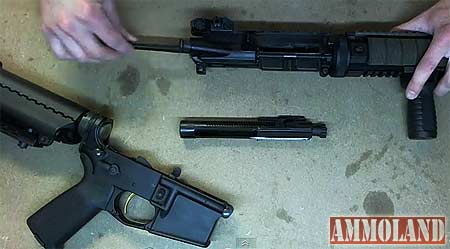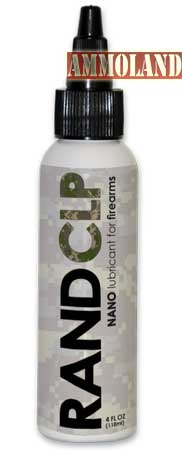By Mike R.


Deep South, USA –-(Ammoland.com)- The wise prepper knows that his guns are the most important part of his survival gear.
Guns are not only a means of taking meat, pelts and hides, they can be used for varmint control around a farm site with crops or farm animals and poultry.
They also serve as an equalizer; guns give the owner threat protection against violent action taken by animals with two or four legs.
A gun in the hands of someone who knows how to capably use it inspires confidence and reduces stress in turbulent times. It also becomes a important commodity in an unstable economy.
Only a matter of legislation stands between the survivalist and his ability to own and use a firearm. He may not be able to replace his current guns due to a hostile government, or a society and economy in disarray. The guns he owns need to work when he needs them to, and the they need to last, perhaps for his lifetime. Cleaning and lubrication are necessary skills to make that happen.
If you want to start a long-winded discussion or stir up a group of ten gun owners bring up the topic of cleaning and lubrication. You will get ten different personal opinions as to how to do it, when to do it, and what to use. What you wont get is how to do it simply, adequately, and cheaply. And all three are possible.
I haven’t written this for the competitive shooter with match-grade weapons. If that is you, you know what you need to do and how you want to do it. This paper covers the essentials for the practical gun owner to maintain proper function easily and frugally in good times and creatively in survival situations.
Preparing for survival keeps me out of money and out of time, but it has got to get done. If there is a cheap and simple method, I am going to use it. My youth, time in the military, and decades of loving to shoot have brought me in touch with military gun experts, gunsmiths, and enthusiasts. Some years ago I started questioning the ideas behind cleaning, lubricating, and protecting firearms. The veil of mystery went away and I was able to refine what I’ve been doing for 15 years at bargain basement prices. I’d like to share this with you.
There is a hidden benefit to simple and inexpensive gun care–it is more likely to get done. No more dreading hours of work as you drive back from the shooting range. That gun that is out of site and out of mind won’t be as hard to get around to cleaning. More frequent care will also make you more familiar with your guns. You may become confident enough to even learn how to totally disassemble and reassemble one or more of your guns and be able to do some minor repairs, or change out parts that you want to replace with something better.
WHY CLEAN AND LUBE?
The old maxim is true–“rust is the enemy of your gun.” Rust is the corrosion of iron or of ferrous steel. The oxygen and moisture in the air react with the surface layer of the metal in the process of oxidation. Other gun metals and even composites are affected by exposure to the environment and time, although modern plastics are relatively impervious to many of the things that harm metals. But until there is a common and popular gun that is entirely made of plastics, the plastic parts will be interfaced with metal parts and some parts of the gun are still at risk of corrosion and malfunction.

Manufacturers use “passivation” to modify the molecular structure of the surface layers of metals to resist corrosion, increase its hardness, and improve the appearance. The surface becomes “passive” to the harmful environment. The molecular structure of the topmost molecular layers of metal is actually modified. Blueing is an older and common method still used on steel today. Newer techniques produce coatings such as a parkerized finish or apply a micro-coating of a resistive material. Aluminum and other alloys can be anodized for better hardness and protection. Steel can be coated with nickel and fluoride. Stainless steel naturally is resistant to the environment but can still corrode and is therefore best passivized. And there are many more methods and materials. Regardless of the method used, none perfectly protect the gun. The minute the gun leaves the factory corrosion begins to attack it. It will need your care.
Long ago men learned that slapping some beef suet or mutton fat on steel or iron helped to hold off corrosion. It also helped the moving parts that rubbed against each other move more easily and not wear down as quickly. Lubrication and protection with oils is no rocket science. Keep this foremost in our mind both now and in a survival situation–all that is necessary is to make the metal more slippery and protect it from the environment. We will cover some of the things that you can use in a pinch, later.
Lubrication and protection are usually provided by the same product–oil. Nothing fancy here. Oil and grease are basically the same thing. One is thicker than the other at room temperature. Chill oil enough and it becomes as thick as grease. Heat up grease enough and it begins to flow like oil. With the exception of special situations when a gun has been manufactured to function properly with a specific lubricant only, what you use is generally not an issue. An example is the M1 Garand rifle;
Read the rest at the Survivalist Blog here: https://www.thesurvivalistblog.net/how-to-clean-a-gun/
About Survivalist Blog
At the Survivalist Blog. We are dedicated to helping ordinary people — people who live on a budget –prepare for an uncertain future. Visit www.thesurvivalistblog.net
